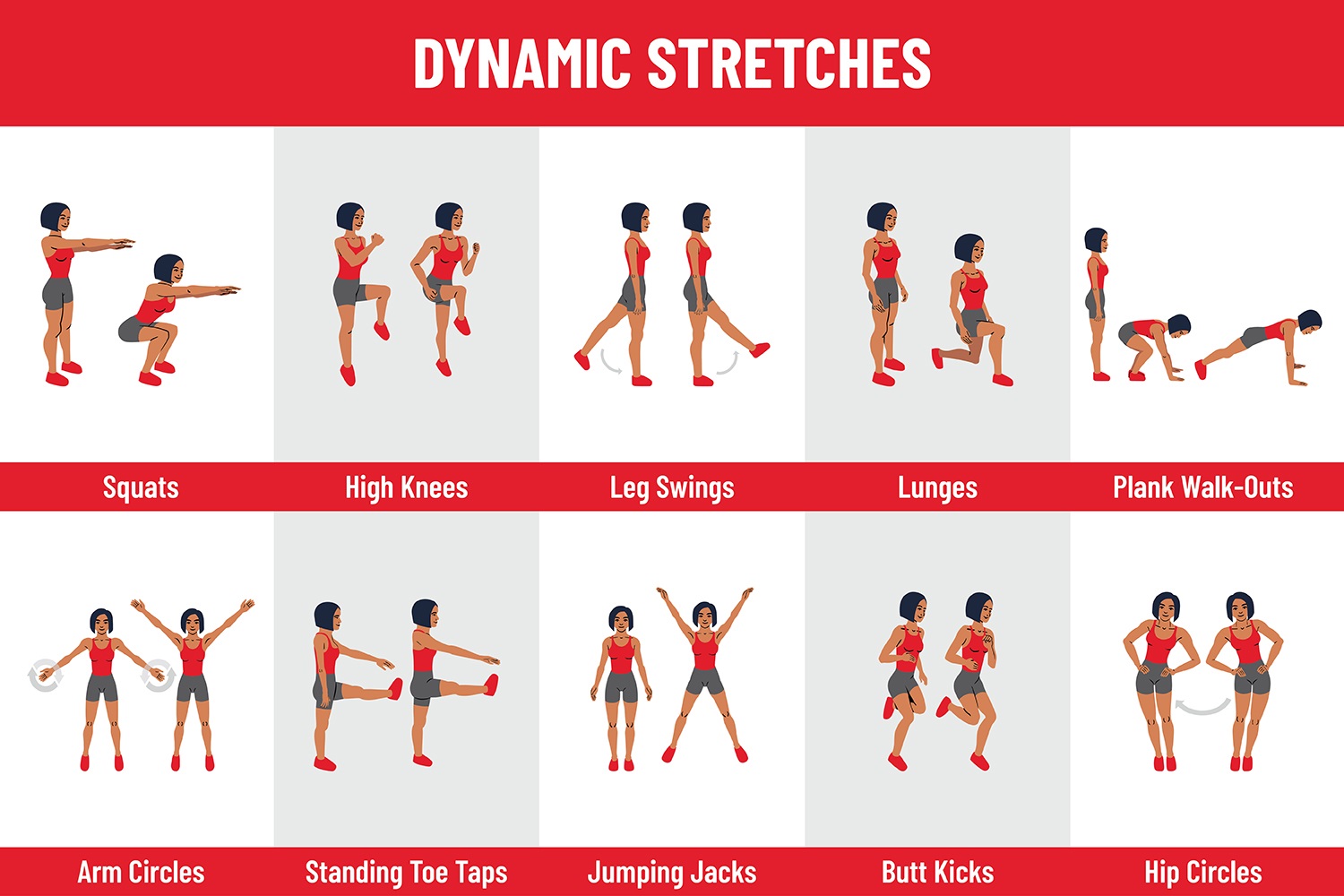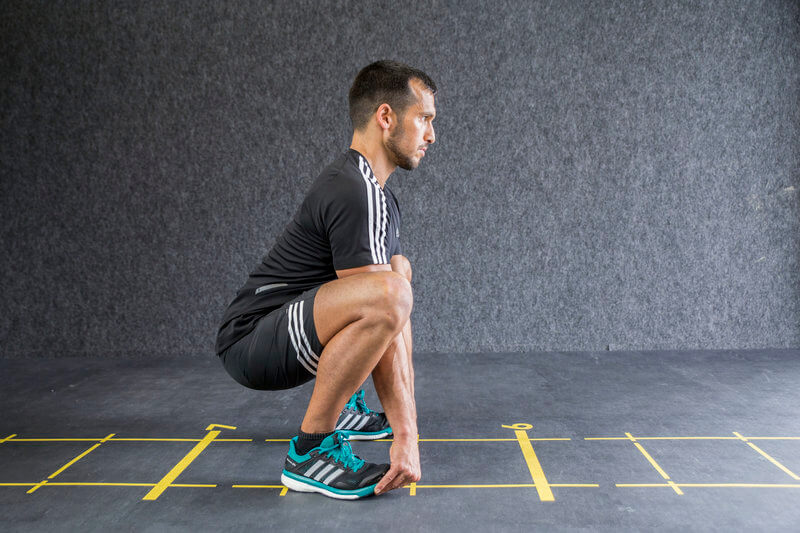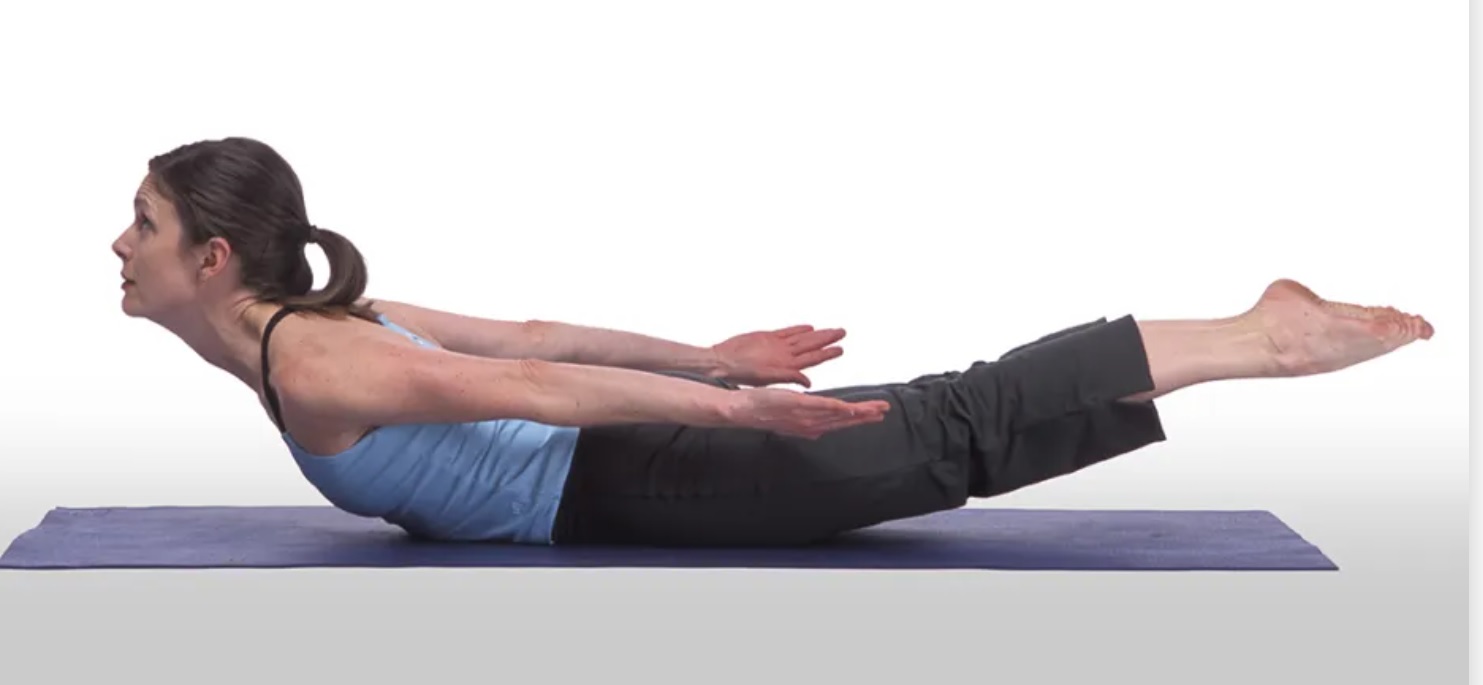When it comes to preventing sports injuries, the importance of an organized warm-up regimen cannot be overstated. A proper warm-up has a several critical components. These factors, or sections, should all work together to reduce the probability of sports injury from physical exercise. Continue reading to find out more!

Why Warm Up?
Warming up before any physical exercise has several advantages, but the main objective is to prepare the body and mind for strenuous exertion.
- One method is to raise the body’s core temperature while raising the body’s muscle temperature.
- By elevating muscle temperature, you help to make muscles loose, supple, and pliable.
- A good warm-up also raises your heart rate and breathing rate.
- This improves blood flow, which boosts the delivery of oxygen and nutrients to the working muscles.
To guarantee a successful and thorough warm-up, four crucial elements, or pieces, should be included.
- The general warm-up
- Static stretching
- Sports-specific warm-up and
- Dynamic stretching
All of these are equally crucial and shouldn’t be overlooked. They work together to prepare you for the upcoming activity by bringing the body and mind to a physical peak.

General Warm-Up
- A light physical activity, such as walking, jogging, easy swimming, stationary bike riding, skipping, or simple aerobics, should be included in the general warm-up.
- The intensity and duration of the general warm-up (or how hard and how long) should be determined by their fitness level.
- A proper general warm-up should take approximately five to ten minutes and result in a mild sweat for the ordinary person.
- The goal of the general warm-up is to simply raise the heart and breathing rates.
- This, in turn, boosts blood flow and aids in the delivery of oxygen and nutrients to working muscles.
- It helps to raise the temperature of the muscles, allowing for a more effective static stretch.
Static Stretching
- Static stretching is a type of flexibility exercise in which you hold a stretch in a stationary position for a set amount of time.
- Primarily used to increase muscle and joint flexibility and range of motion.
- Frequently used in warm-up and cool-down routines before and after physical activities.
- Static stretches should be done slowly and gently to the point of tension, not pain.
- Allow the muscle to relax and elongate by holding each stretch for 15 to 60 seconds.
- To encourage relaxation, breathe deeply and evenly throughout the stretch.
- Improves total physical performance by increasing muscular flexibility and joint range of motion.
- It helps with the posture and the reduction of muscle imbalances.
- Can help relieve muscle tension and promote relaxation.
- Improves total physical performance by increasing muscular flexibility and joint range of motion.
- Concentrate on the major muscle groups, such as the hamstrings, quadriceps, calves, chest, shoulders, and back.
Sports Specific Warmup
- A sport-specific warm-up is a pre-exercise regimen that prepares the body for the specific demands of a given sport. It consists of dynamic movements and exercises that mirror the actions and motions of the sport.
- Improves performance by stimulating the appropriate muscle groups and movement patterns.
- Improves overall muscular function by increasing blood flow, oxygen supply, and muscle temperature.
- Improves neuromuscular coordination and response time, which are important for sport-specific talents.
- Light aerobic exercise (such as jogging or brisk walking) increases heart rate and blood flow.
- Elevates core body temperature, allowing muscles to use oxygen more efficiently
- Active stretching with a limited range of motion.
- This course focuses on the muscles and joints used in sports.
- Improves joint mobility and flexibility.
Dynamic Stretching
- This is a sequence of dynamic stretches that must be included at the end of a complete warm-up.
- This type of stretching involves an increased risk of damage if not performed appropriately.
- After achieving a moderate to high level of overall flexibility, dynamic stretching is most beneficial.
- Dynamic stretching comprises regulated, moderate bouncing or swinging movements that take a specific body part to the limits of its range of motion.
- The strength of these bouncing or swinging motions should progressively grow but should never become sudden or uncontrolled.
- If you are not familiar with dynamic stretching, it is strongly advised that you get training and assistance from a skilled sports coach or trainer before doing dynamic stretches.

Benefits of a Warmup
- Warming up tells your body to prepare for exercise by performing light-intensity or low-impact motions.
- A “warmup” may help lower the risk of injury and pain by stimulating your circulatory system and raising your body temperature.
- In a 2008 Norwegian study, researchers compared the injury rate of 1,000 female football athletes who warmed up before exercises against hundreds of female football players who did not. They discovered that individuals who warmed up had fewer injuries and fewer overuse injuries.
- Active stretching involves practicing jumping jacks or lunges before a workout to stimulate the muscles, whereas static stretching is merely stretching your muscles by touching your toes or lengthening your calf.
- Warming up and exercising your muscles in preparation for a workout significantly reduced the injury rate in these athletes.
- Incorporating a warmup into your routine will assist your body in easing into the forthcoming workout by engaging essential internal systems such as your cardiovascular system and muscle regions that will be heavily utilized in compound movements.
How does a Warmup Change Your Body’s Response to Exercise?
- The chance of injury decreases since you’re preparing your body for some of the types of motions it should expect to engage in.
- When you do a brief warmup, you’re simply preparing your body to ease into the forthcoming activities by engaging in some light physical activity.
- It improves your flexibility and range of motion before attempting to put tension on those muscle groups and joints by lifting heavy weights or engaging in strenuous physical activity.
- A modest warmup before your exercise regimen, in conjunction with some pre-workout stretches, can help you increase your range of motion and general flexibility before your training session.
- When you raise your muscle temperature, you are assisting your body in moving in specific ways and performing certain activities without generating undue strain.
- As your muscle temperature rises, you’re assisting your muscles in adapting to performance under stress and the oxygen requirements that come with particular exercises.
- Your muscles will gradually become acclimated to this new state and relax.
- Another reason you should do a little warmup before your workout is to psychologically prepare yourself. We’ve all been in situations where our brains are focused on a hundred different things, and the last thing on our minds is the forthcoming jog or weights we’re about to lift.
Some Warmups to Try
- Bodyweight squats
- Position your feet hip-width apart, toes pointed straight ahead or slightly outward.
- Put your hands on your hips or out in front of you.
- Hinge your hips back, bend your knees, and keep your weight on your heels. Lower your hips to the ground. Keep your back straight.
- Lower yourself till you feel a stretch in your quadriceps. Pause for one count before pushing through your heels and stretching your hips back to the beginning position.
- Rep 10 times

- 90-90
- Sit on the ground with your right leg 90 degrees in front of you and your left leg 90 degrees behind you.
- You should be able to sit up straight and tall. If you raise your left arm straight, your left knee and arm should line up, as should your hip and shoulder.
- To support your posture, place your right hand alongside you, palm down, fingers pointing behind you.
- Pay close attention to your right (front) leg’s knee and ankle
- You should feel a significant stretch. Hold for 5 seconds while actively pushing your knee and ankle into the ground. Return to an upright position.
- Repeat the movement five times before switching legs and doing it again on the opposite side.
- Repeat 10 times
- Bird Dog
- Get down on all fours on the ground, knees under hips, wrists under shoulders.
- Maintain a neutral spine by contracting your abs and bringing your shoulder blades back and down towards your hips.
- Raise and lengthen your left leg until it is straight back and parallel to the floor, while rising and straightening your right arm until it is parallel to the floor.
- Your head and shoulders should be in a relaxed position.
- Repeat 10 times
- Banded Row
- Place a resistance band under your feet and grasp the grips. Your feet should be shoulder-width apart, with your toes slightly pointing out.
- Maintain a small bend in your knees and a forward bend in your hips. Maintain a flat back and an engaged core.
- Pull the resistance band handles back, starting with your elbows and pushing your shoulder blades closer together. Hold the contraction in your upper back for one count.
- Slowly return to the starting position.
- Repeat 10 times
- Inchworms
- Take a natural posture and stand tall.
- Hinge from your hips and, if possible, touch the floor with your fingertips or palms.
- Walk your hands as far forward as you can without letting your hips drop while keeping your legs straight.
- You should finish in a plank position, with your hands under your shoulders.
- Slowly return your hands to your feet and straighten to your starting position.
- Repeat 10 times

- Wall Angels
- Stand with your feet shoulder-width apart against a wall and walk your feet out two or three steps. Keep your knees slightly bent.
- Raise your hands near your ears and place your shoulders and arms flat against the wall while engaging your core.
- Push your arms up the wall above you while maintaining contact with it.
- Lower your arms carefully and repeat the process.
- Repeat 10 times.
- Lunge with Hip Opener
- Stride forward with your right foot, leaving your left foot behind.
- Reduce your body to the floor by bending your right knee and dropping your left leg almost to the floor.
- By turning your right knee to the right, you can gently open it. Maintain proper foot placement.
- Rotate your left leg gently and slowly to the left to slightly open it. Return to the starting position after one count. Repeat with the other side.
- Repeat 10 times on each side
- Gate Opener
- Stand tall, feet hip-width apart, toes pointed forward or slightly outward.
- Maintain your arms at your sides while engaging your core and bringing your shoulder blades back and down.
- Shift your weight to your right side and elevate your left knee to approximately the level of your belly button. Move your right leg in and across your body’s midline. Cross your left knee across your right leg.
- Next, extend your lifted left leg to the left (abduction), opening your hip as far as possible. Maintain a strong core and forward-pointing hips.
- Return the knee to the center slowly, then return to the beginning position by lowering your foot to the ground.
- Repeat on the other side.
- Arm Circles with Reach Out
- Stand tall with your core engaged.
- Concentrate on your shoulders while gently reaching your arm back behind you until you have to flip your arm around so your palm is facing forward.
- When reaching behind you and needing to flip your hand to face up, extend as far back as you can while maintaining your hips straight.
- Flip your palm forward and circle your arm overhead until it is straight out in front of you. Reach forward again, striving to increase your range of motion while keeping your core straight.
- Repeat 5 times, then reverse the action for another 5 times.
- Repeat on the other side.
- Prone Cobra
- Lay on your stomach with your hands by your sides, palms facing down.
- Lift your chest and torso as far as you can while maintaining your chin tucked into your chest.
- Lift your arms off the ground, thumbs pointing up to the ceiling, to expand your shoulders. Your palms should be facing away from you.
- Breathe through your nostrils and keep your shoulders open. Hold for 30 seconds or longer, if possible. Build up to holding this stance for up to 3 minutes at a time.
- Repeat the movement until you’ve held the contraction for 3 minutes. Take rests between sets if necessary.

General Tips while Warming Up
- How much time should you spend warming up? Professional athletes typically spend a significant amount of time preparing for a game or contest.
- Tennis pros, for example, may whack balls for an hour before a match. Professional athletes aren’t just stretching their muscles. They are practicing a certain set of motions.
- A warm-up session of about 10 minutes should be sufficient for most people who want to warm up their muscles and loosen their joints. To make your warmup more successful, consider the following:
- Begin your warm-up immediately before your game, race, workout, or other activity.
- Engage the cardiovascular system by concentrating on major muscle groups such as the legs.
- Begin slowly and gradually increase your speed or intensity.
- Work out till you are mildly perspiring but not exhausted.
Frequently Asked Questions (FAQs):
How long should a warm-up last?
Aim for 5-10 minutes to gradually ramp up your body temperature and prepare your muscles.
Can I skip warm-ups if I’m short on time?
It’s best not to skip warm-ups, as they play a vital role in preventing injuries and improving performance.
Can I warm up too much?
While you should avoid excessive fatigue, a thorough warm-up shouldn’t leave you exhausted.
Can warm-ups prevent muscle soreness?
While they can’t entirely prevent muscle soreness, warm-ups may help reduce the severity of post-workout soreness.
Can warm-ups help with mental focus?
Yes, the process of warming up can help shift your focus from daily stressors to your upcoming workout.
Can warm-ups reduce the risk of heart problems during exercise?
A proper warm-up gradually increases your heart rate, reducing the risk of sudden stress on the cardiovascular system.
Should I warm up in cold weather?
Yes, warming up is even more crucial in cold weather to prevent muscle strains and promote blood flow.









